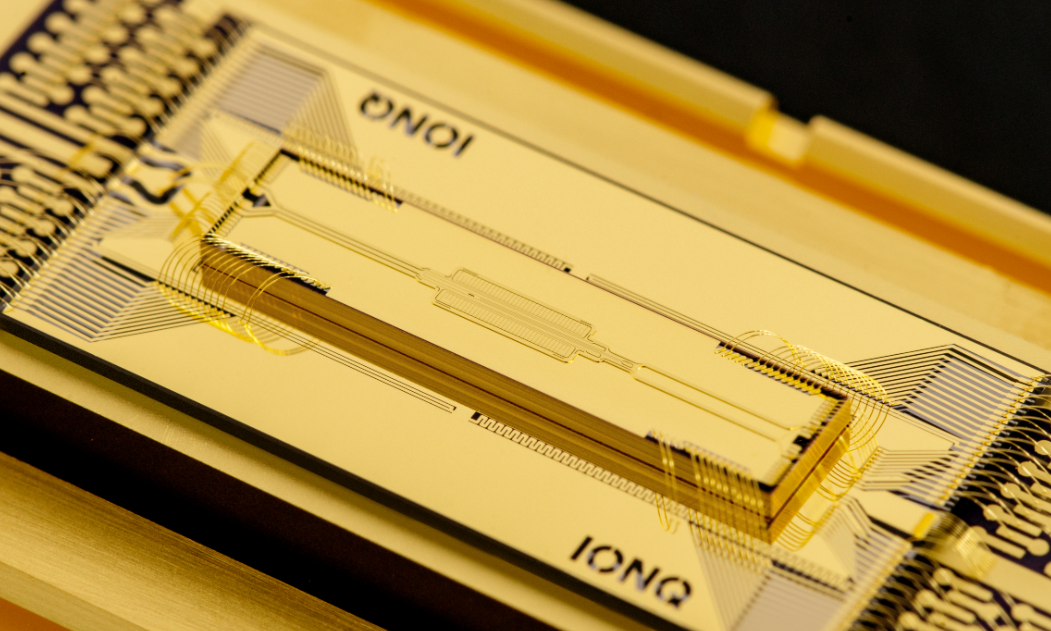A “bit” is a tiny toggle that can be set to either 0 (off) or 1 (one). Bits are the foundation of our information technology and digital society. In the future, we will have quantum computers that rely instead on “qubits,” which exist in 0 and 1 states simultaneously, theoretically allowing quantum computers to explore multiple states at once. However, qubits are sensitive to tiny disturbances like heat, vibration, and stray magnetic fields. The tiniest disturbances can cause them to lose their quantum state. This makes it difficult to operate quantum computers at scale and to keep error rates low.
In the past year, quantum experts have shown credible roadmaps to millions of qubits, which is the scale needed to turbo-charge AI models of the future. They have also been able to reduce error rates enough to keep calculations coherent.
As such, we are finally starting to see what a realistic path to the quantum era might look like. While it may not replace conventional data centers in the near future, we might see it provide a “boost button” that lets cutting-edge AI systems explore staggeringly large search spaces in biology, chemistry, or materials in minutes instead of decades.
Three Playbooks, Three Breakthroughs
Despite the different approaches undertaken by leaders in quantum, in one aspect, they are similar: they all expect to bolt a cryogenic “quantum zone” onto existing data centers.
-
Playbook 1—Microsoft Hardware Bet - Topological qubits: exotic “Majorana” states etched into semiconducting nanowires
- Latest Milestone: Unveiled Majorana 1; aims to squeeze one million error-corrected qubits onto a single chip inside Azure fridges—The Verge.
-
Playbook 2—Google Hardware Bet - Superconducting qubits plus smarter error codes
- Latest Milestone: New Willow processor pushed errors below the fault-tolerance threshold and solved a benchmark in five minutes that would take a classical supercomputer 10 septillion years—blog.google.com
Playbook 3—IBM Hardware Bet - Relentless scale-up of its “heavy-hex” qubits
- Latest Milestone: Road-map to 200 logical qubits and 100 million gates by 2029—enough to run real-world algorithms continuously—IBM.
Others in the space, are promoting quantum and other physical research and plan to move boldly as the opportunity arises.
A New Global Race
Economies around the world are rushing to co-locate qubits and AI accelerators, knowing that whoever pairs them first gets the edge in areas like drug discovery, battery design, and national-security modeling. Supply chains are the new battleground: helium-3 isotopes, fridge production, and control-chip lithography sit beside GPUs on wish lists (and export control watchlists).
- United States: Private giants (Microsoft, Google, IBM) lead in qubit counts, while the CHIPS Act is funding semiconductor fabrication plants (fabs) for quantum chips.
- European Union: Brussels just launched the Quantum Europe Strategy, pledging fresh capital and strict “tech-sovereignty” rules to keep hardware and talent on the continent.
- China: Photonic prototype Jiuzhang 3.0 smashed boson-sampling records and a parallel superconducting effort (Zuchongzhi) shows promise.
- Japan: Government-backed consortia unveiled one of the world’s largest superconducting rigs and promise an Osaka demo for Expo 2025.
- Gulf states: Dubai is hosting a Quantum Innovation Summit and promoting free-zone benefits to attract labs and dilution-fridge vendors, mirroring its earlier AI land acquisition.
Keeping the Quantum Future Open
Quantum’s physics are weird, but the questions it raises are familiar: Will a handful of vendors lock the market the way three cloud giants dominate today, or can governments and developers nudge the stack toward real choice?
There are a few ways we can push quantum in a more open direction:
- Require post-quantum security by default: The U.S. National Institute of Standards and Technology (NIST) has already picked lattice- and hash-based algorithms like ML-KEM and CRYSTALS-Dilithium as the new cryptographic baseline precisely because large qubit fleets will shred today’s RSA and ECC keys. Mandating these standards in government procurement and offering tax breaks for private adoption can de-risk the internet and emerging blockchain systems before the first million-qubit machine goes online.
- Fund a shared testbed with public benchmarks: A national lab could host a testbed of “try-before-you-buy” clusters for startups to benchmark workloads across multiple vendors under identical conditions. Transparent leaderboards could keep marketing hype in check and lower the bar for new entrants.
- Promote open interfaces, not walled gardens: Regulators could require big providers to publish full API specs once they cross a market-share threshold, the same way telecom carriers must interconnect.
The road ahead
Just like how GPUs supercharged AI, quantum will accelerate conventional AI computing. This will happen sooner than expected. Whether that future feels like a public utility or a gated community depends partly on choices made now about open standards and cryptographic safeguards.









